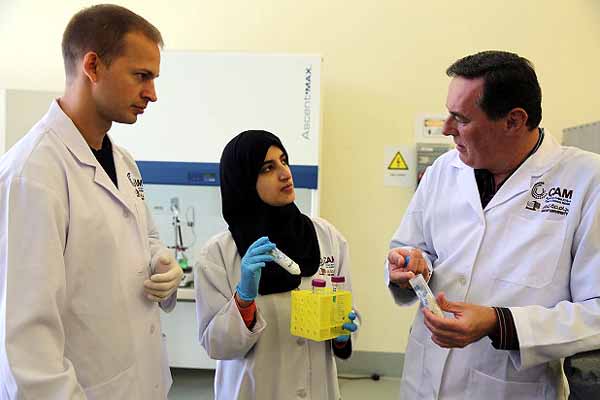Qatar University Researchers Gather Nanocellulose From Abundant Palm Tree Waste
Scientists at Qatar University (QU) announced this past week that they are experimenting with new uses for the "millions" of kilograms of date palm tree leaves that are discarded in the country each year.
These include using the byproducts as water filters as well as in everyday products such as paper, plastic wood and super-strong plastic in a more environmentally-friendly way. The university’s Center for Advanced Materials (CAM) has been working on the research project Renewable Palm Waste: More Valuable Than People Think for about 18 months. It aims to find practical uses for leaves which are regularly trimmed from Qatar’s 600,000 date palm trees.
"Qatar has lots of date palms and each tree has up to 10 leaves cut from it at a time, which used to be woven to make baskets or handmade artworks, but they’re not used any more.
Instead, millions of kilos of the leaves go into landfill or are burned," explained the project’s Lead Researcher, QU Professor Igor Krupa. "At the center, we try to find new ways to recycle and reuse ordinary waste so we began looking at what we could do with the date palm leaves," he added.
The team, including Dr. Patrik Soboliciak and Aisha Tanvir, has been exploring new ways of extracting nanocellulose from the palm trees and refining the technology to find uses for the product.
Nanocellulose has properties which are similar to Kevlar – the lightweight material which is usually made from fossil fuels to make high-strength durable materials.
Manufacturing these goods from date palm nanocellulose instead would be more environmentally friendly and sustainable, Krupa said.
In the early stages of the research, the team ground down the palm leaves and mixed it with plastics to make a more sustainable form of plastic-wood, which can be used to make durable door and window frames and fences.
Then the team used existing research, which had already established a method for extracting nanocellulose from the palm leaves and to refine it.
When it’s mixed with plastics, nanocellulose can significantly enhance the performance of the product to increase its durability and strength.
Uses
"We are still optimizing the technology – the nanocellulose needs to be easily and cheaply extracted," Krupa said adding that it could be used in car manufacturing, for example.
"The automotive industry is using more and more plastics, which are mixed with different fibers (glass or carbon) to get stronger materials. We could use nano-fibers instead to enhance the plastics in this industry," he went on.
In addition to strengthening materials, the nanocellulose could also be used for filtering water. It can form a membrane which absorbs heavy metals such as copper, and other impurities from water.
"It is fitting that date palm, which is indigenous to Qatar and is deeply embedded in our cultural history, is found to be exhibiting strong potential as a sustainable green reinforcement material," CAM director Professor Mariam Al-Maadeed said in a statement.
TAPPI
http://www.tappi.org/

